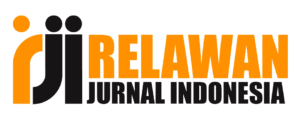Microplastic in Marine Environment and Its Impact
DOI:
https://doi.org/10.31851/sainmatika.v16i1.2884Keywords:
Microplastic, marine environment, environment, plastic debris, plasticsAbstract
This article was the result of  a research of literature study sources and impact of microplastic in the marine environment. Plastic debris could make microplasric caused by ultraviolet and give some negative impact for marine environment.  Plastic debris in marine environment has come from industrial and fishing activities (human activities). All of marine environment in the world has contaminated by microplastic, microplastic will give negative impact for marine biota, recent study inform that turtle and fish have high microplastic content in both them.plastics industries should take responsibility for the end-of-life oftheir products by introducing plastic recycling or upgrading programmers.References
Andrady, A. L. (2011). Microplastics in the marine environment. Marine Pollution Bulletin, 62(8), 1596–1605.
https://doi.org/10.1016/j.marpolbul.2 011.05.030
Andrady, A. L., & Neal, M. A. (2009). Applications and societal benefits of plastics. Philosophical Transactions of the Royal Society B: Biological Sciences, 364(1526), 1977–1984.
https://doi.org/10.1098/rstb.2008.030 4
Azzarello, M., & Van Vleet, E. (2007). Marine birds and plastic pollution. Marine Ecology Progress Series, 37, 295–303.
https://doi.org/10.3354/meps037295
Bergmann, M. (2009). Marine Anthropogenic Litter (M. Bergmann, L. Gutow, & M. Klages, eds.). https://doi.org/10.1007/978-3-319- 16510-3
da Silva Mendes, S., de Carvalho, R. H., de Faria, A. F., & de Sousa, B. M. (2015). Marine debris ingestion by Chelonia mydas (Testudines: Cheloniidae) on the Brazilian coast. Marine Pollution Bulletin, 92(1–2), 8–10.
https://doi.org/10.1016/j.marpolbu l.2015.01.010
Derraik, J. G. B. (2002). The pollution of the marine environment by plastic debris : a review
Foekema, E. M., Gruijter, C. De, Mergia,
M. T., Franeker, J. A. Van, Murk,
A. J., & Koelmans, A. A. (2013). Foekema EM. Plastic in North Sea Fish. ES&T 2013. Environmenrtal Science & Technology, 47, 8818–8824. https://doi.org/10.1021/es400931b
Good, T. P., June, J. A., Etnier, M. A., & Broadhurst, G. (2010). Derelict fishing nets in Puget Sound and the Northwest Straits: Patterns and threats to marine fauna. Marine Pollution
Bulletin, 60(1), 39–50.
https://doi.org/10.1016/j.marpolbu l.2009.09.005
Gregory, M. R. (2009). Environmental implications of plastic debris in marine settings- entanglement, ingestion, smothering, hangers- on, hitch-hiking and alien invasions. Philosophical Transactions of the Royal Society B: Biological Sciences, 364(1526), 2013–2025. https://doi.org/10.1098/rstb.2008. 0265
Guebert-Bartholo, F. M., Barletta, M., Costa, M. F., & Monteiro-Filho, E. L. A. (2011). Using gut contents to assess foraging patterns of juvenile green turtles Chelonia mydas in the Paranaguá Estuary, Brazil. Endangered Species Research, 13(2), 131–143. https://doi.org/10.3354/esr00320 Hopewell, J.,
Dvorak, R., & Kosior, E. (2009). Plastics recycling: Challenges and opportunities. Philosophical Transactions of the Royal Society B: Biological Sciences, 364(1526), 2115–2126.
https://doi.org/10.1098/rstb.2008. 0311
Lee, D. I., Cho, H. S., & Jeong, S. B. (2006).
Distribution characteristics of marine litter on the sea bed of the East China Sea and the South Sea of Korea. Estuarine, Coastal and Shelf Science, 70(1–2), 187–194.
https://doi.org/10.1016/j.ecss.2006.0 6.003
Lusher, A. L., McHugh, M., & Thompson,
R. C. (2013). Occurrence of microplastics in the gastrointestinal tract of pelagic and demersal fish from the English Channel. Marine Pollution Bulletin, 67(1–2), 94–99. https://doi.org/10.1016/j.marpolbul.2 012.11.028
Mallory, M. L., Roberston, G. J., & Moenting, A. (2006). Marine plastic debris in northern fulmars from Davis Strait, Nunavut, Canada. Marine Pollution Bulletin, 52(7), 813–815.
https://doi.org/10.1016/j.marpolbul.2 006.04.005
Moore, C. J. (2008). Synthetic polymers in the marine environment: A rapidly increasing, long-term threat. Environmental Research, 108(2),
–139.
https://doi.org/10.1016/j.envres.2008
.07.025
PlasticsEurope Market Reserach Group. (2015). World Plastics Materials Demand 2015 by Types. In Plastics Europe Association of Plastics Manufacturers.
Revelles, M., Cardona, L., Aguilar, A., & Fernández, G. (2007). The diet of pelagic loggerhead sea turtles (Caretta caretta) off the Balearic archipelago(western Mediterranean): Relevance of long-line baits. Journal of the Marine Biological Association of the United Kingdom, 87(3), 805–
https://doi.org/10.1017/S0025315407 054707
Rochman, C. M., Browne, M. A., Halpern, B. S., Hentschel, B. T., Hoh, E., Karapanagioti, H. K., … Thompson, R. C. (2013). Policy: Classify plastic waste as hazardous. Nature, 494(7436),
–170.
https://doi.org/10.1038/494169a
Rosanti, D. (2016). Stuktur Komunitas Kepiting Uca Pada Zona Avicennia Hutan Mangrove Desa Sungai Batang Kecamatan Air Sugihan Kabupaten Ogan Komering Ilir. Sainmatika: Jurnal Ilmiah Matematika dan Ilmu Pengetahuan Alam, 8(1).
Rosarina, D., & Laksanawati, E. K. (2018). Studi Kualitas Air Sungai Cisadane Kota Tangerang Ditinjau Dari Parameter Fisika. Jurnal Redoks, 3(2), 38-43
Santos, R. G., Andrades, R., Boldrini, M. A., & Martins, A. S. (2015). Debris ingestion by juvenile marine turtles: An underestimated problem. Marine Pollution Bulletin, 93(1–2), 37–43.
https://doi.org/10.1016/j.marpolbu l.2015.02.022
Song, Y. K., Hong, S. H., Jang, M., Kang,
J. H., Kwon, O. Y., Han, G. M., & Shim, W. J. (2014). Large accumulation of micro-sized synthetic polymer particles in the sea surface microlayer. Environmental Science and Technology, 48(16), 9014–9021. https://doi.org/10.1021/es501757s
Thompson, R. C., Hagino, Y., Viet, P. H., Ochi, D., Akkhavong, K., Saquing, J. M., … Ogata, Y. (2009). Transport and release of chemicals from plastics to the environment and to wildlife Philosophical Transactions of the Royal Society B: Biological Sciences, 364(1526), 2027–2045.
https://doi.org/10.1098/rstb.2008. 0284
Tokiwa, Y., Calabia, B. P., Ugwu, C. U., & Aiba, S. (2009). Biodegradability of plastics. International Journal of Molecular Sciences, 10(9), 3722–
https://doi.org/10.3390/ijms1009372 2
Wibowo, Y., & Sadikin, A. (2019). Biology in the 21st-Century: Transformation in biology science and education in supporting the sustainable development goals. Jurnal Pendidikan Biologi Indonesia, 5(2). doi:https://doi.org/10.22219/jpbi.v5i2.7956
Wibowo, Y. G., & Syarifuddin, H. (2018). Rancangan Dimensi Pada Tambang Terbuka Sebagai Upaya Pencegahan Kerusakan Lingkungan Yang Diakibat Oleh Air Asam Tambang. Semnas SINTA FT UNILA, 1, 49–
Wibowo, Y. G., Zahar, W., Syarifuddin, H., Asyifah, S., & Ananda, R. (2019). Pengembangan Eco-Geotourism Geopark Merangin Jambi. Indonesian Journal of Environmental Education and Management, 4(1), 23–43.
Wick, A. F., Daniels, W. L., Orndorff, Z. W., & Alley, M. M. (2013). Lost at Sea: Where is All the Plastic? Soil Use and Management, 29(3), 354–364. https://doi.org/10.1111/sum.12058
Wilson, S., Mason, S., Eriksen, M., Edwards, W., Farley, H., Zellers, A., … Amato, S. (2013). Microplastic pollution in the surface waters of the Laurentian Great Lakes. Marine Pollution Bulletin, 77(1–2), 177–
https://doi.org/10.1016/j.marpolbul.2 013.10.007
Winarno, H., Muhammad, D., Ashyar, R., & Wibowo, Y. G. (2019). Pemanfaatan limbah fly ash dan bottom ash dari pltu sumsel-5 sebagai bahan utama pembuatan paving block. Jurnal Teknika, 11(1).
Wright, S. L., Thompson, R. C., & Galloway, T. S. (2013). The physical impacts of microplastics on marine organisms: A review. Environmental Pollution, 178, 483–492.








